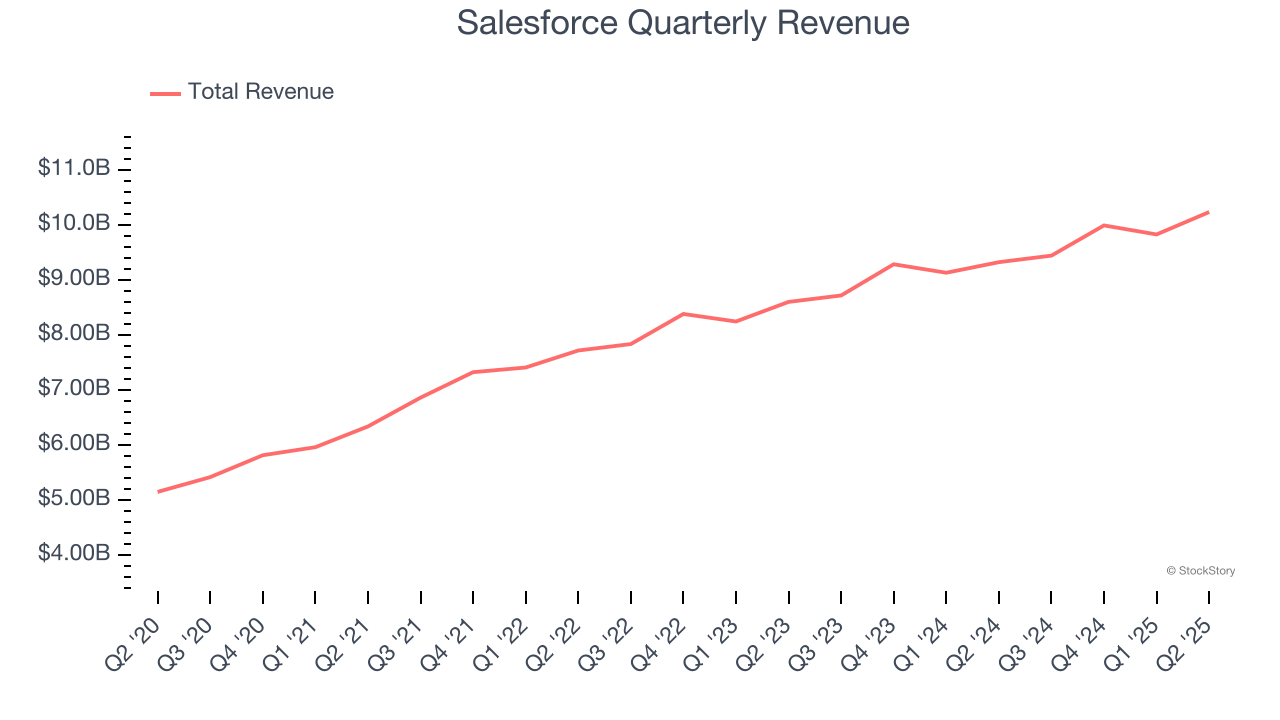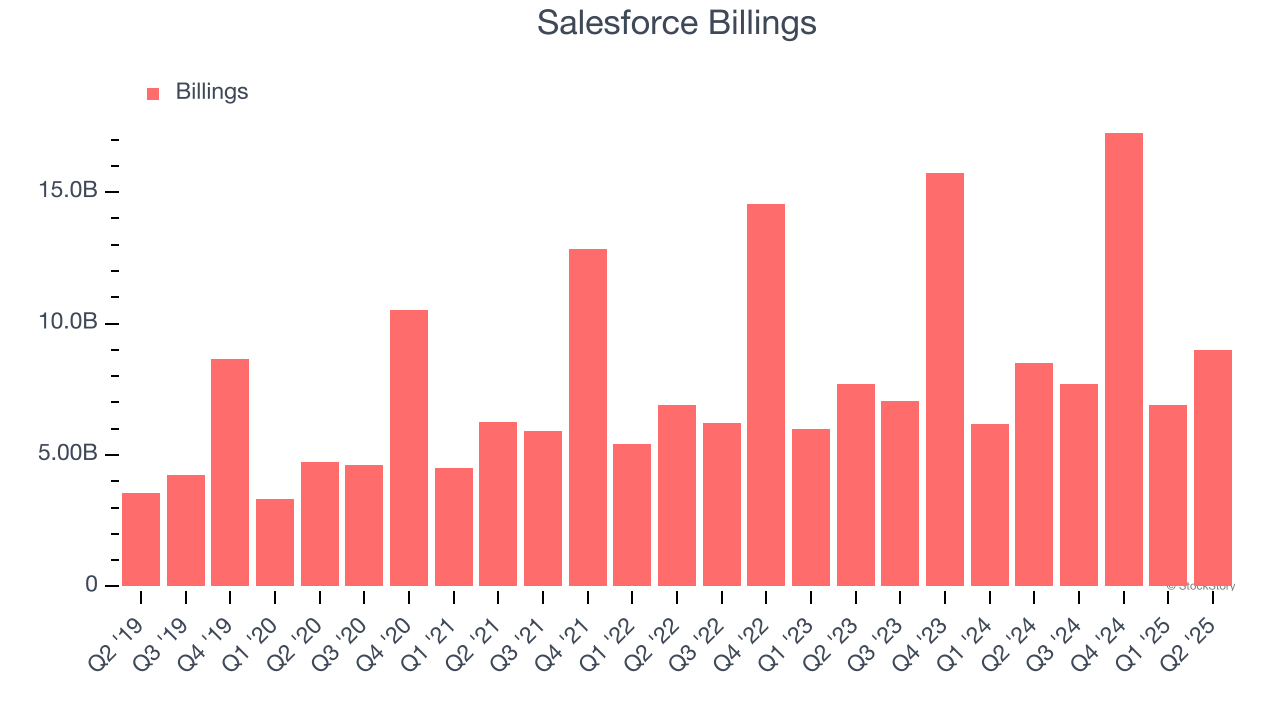
CRM software giant Salesforce (NYSE: CRM) reported Q2 CY2025 results exceeding the market’s revenue expectations, with sales up 9.8% year on year to $10.24 billion. The company expects next quarter’s revenue to be around $10.27 billion, close to analysts’ estimates. Its non-GAAP profit of $2.91 per share was 4.7% above analysts’ consensus estimates.
Is now the time to buy Salesforce? Find out by accessing our full research report, it’s free.
Salesforce (CRM) Q2 CY2025 Highlights:
- Revenue: $10.24 billion vs analyst estimates of $10.14 billion (9.8% year-on-year growth, 1% beat)
- Adjusted EPS: $2.91 vs analyst estimates of $2.78 (4.7% beat)
- Adjusted Operating Income: $3.51 billion vs analyst estimates of $3.42 billion (34.3% margin, 2.6% beat)
- The company slightly lifted its revenue guidance for the full year to $41.2 billion at the midpoint from $41.15 billion
- Management slightly raised its full-year Adjusted EPS guidance to $11.35 at the midpoint
- Operating Margin: 22.8%, up from 19.1% in the same quarter last year
- Free Cash Flow Margin: 5.9%, down from 64.1% in the previous quarter
- Billings: $8.99 billion at quarter end, up 6% year on year
- Market Capitalization: $241.7 billion
Company Overview
With its cloud-based platform named after its stock ticker symbol CRM (Customer Relationship Management), Salesforce (NYSE: CRM) provides customer relationship management software that helps businesses connect with their customers across sales, service, marketing, and commerce.
Revenue Growth
A company’s long-term sales performance can indicate its overall quality. Any business can put up a good quarter or two, but many enduring ones grow for years. Over the last three years, Salesforce grew its sales at a 10.4% annual rate. Although this growth is acceptable on an absolute basis, it fell short of our standards for the software sector, which enjoys a number of secular tailwinds.

This quarter, Salesforce reported year-on-year revenue growth of 9.8%, and its $10.24 billion of revenue exceeded Wall Street’s estimates by 1%. Company management is currently guiding for a 8.7% year-on-year increase in sales next quarter.
Looking further ahead, sell-side analysts expect revenue to grow 8.9% over the next 12 months, a slight deceleration versus the last three years. This projection doesn't excite us and suggests its products and services will see some demand headwinds.
Unless you’ve been living under a rock, it should be obvious by now that generative AI is going to have a huge impact on how large corporations do business. While Nvidia and AMD are trading close to all-time highs, we prefer a lesser-known (but still profitable) stock benefiting from the rise of AI. Click here to access our free report one of our favorites growth stories.
Billings
Billings is a non-GAAP metric that is often called “cash revenue” because it shows how much money the company has collected from customers in a certain period. This is different from revenue, which must be recognized in pieces over the length of a contract.
Salesforce’s billings came in at $8.99 billion in Q2, and over the last four quarters, its growth slightly lagged the sector as it averaged 9% year-on-year increases. This performance mirrored its total sales and suggests that increasing competition is causing challenges in acquiring/retaining customers. 
Customer Acquisition Efficiency
The customer acquisition cost (CAC) payback period measures the months a company needs to recoup the money spent on acquiring a new customer. This metric helps assess how quickly a business can break even on its sales and marketing investments.
Salesforce is extremely efficient at acquiring new customers, and its CAC payback period checked in at 19.4 months this quarter. The company’s rapid recovery of its customer acquisition costs means it can attempt to spur growth by increasing its sales and marketing investments.
Key Takeaways from Salesforce’s Q2 Results
It was good to see Salesforce provide full-year EPS guidance that slightly beat analysts’ expectations. On the other hand, its billings missed and its revenue guidance for next quarter was in line with Wall Street’s estimates. Overall, this was a weaker quarter. The stock traded down 3.6% to $247.14 immediately following the results.
Salesforce may have had a tough quarter, but does that actually create an opportunity to invest right now? If you’re making that decision, you should consider the bigger picture of valuation, business qualities, as well as the latest earnings. We cover that in our actionable full research report which you can read here, it’s free.






